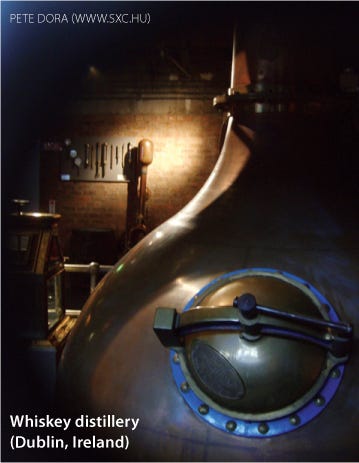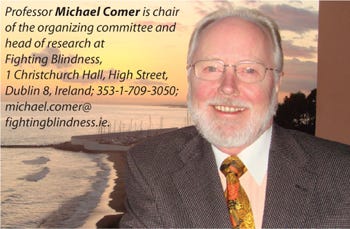It is a great pleasure for me to express an invitation and welcome message to you for the 21st ESACT Conference in Dublin, Ireland, here in the pages of BioProcess International, one of the most prestigious journals of its kind, “covering the whole development process for the global biotechnology industry.”
Ireland is famous for her warmth of heart and poetic spirit, sometimes even brought into conjunction with Irish spirits — uisce beatha, “the water of life” — which together with Irish potato and soda breads can boast a long and harmonious relationship with “biotechnology.” So it is appropriate for Ireland to host ESACT’s coming of age, the 21st meeting some 32 years after the meeting’s conception in 1976 — after a gestation period of some three years!
In the early 1970s, large-scale animal cell culture was largely based on the foot and mouth disease virus (FMDV) vaccine. In 1973, two scientists working in this field, Simon Barteling (CDI, Lelystad, The Netherlands) and Ray Spier (AVRI, Pirbright, UK) discussed the absence of a (European) society through which information on “mass cell culture” could be disseminated. Subsequent canvassing of a number of proponents of cell culture supported the idea, and Toon van Wezel (AVRI, Bilthoven, the Netherlands) and Bryan Griffiths (MRE, Porton, UK) joined Simon and Ray in forming a group to initiate a putative “European Society for the Large-Scale Production of Animal Cells and Viruses.” Their first meeting was in Pirbright on 21 January 1975, but the decisive moment came a year later (at a meeting on 4 February 1976) when the decision was taken to launch the new society at an inaugural meeting in Amsterdam later that year.
I think it was my mother’s belief that my heritage was an “education” and that “necessity was the mother of invention” — as well as a desire to help people like my father, who was ill for as long as I could remember and died as a result of the consequences of an infection just a decade before the very first ESACT meeting — that inspired me to devote my life and career to medical research. With pride I can say that the treatments and technology have come a long way and that we, the ESACT family, have played no small part in biotechnology’s success. The scientific program in this 21st meeting promises to provide a fascinating mix of presentations from leading scientists in the field of applied cell biology.


PETE DORA (WWW.SXC.HU) Whiskey distillery (Dublin, Ireland)
The Scientific Program: Sunday 7 June 2009
Workshops: The conference will commence with two sets of parallel workshops on the subjects listed below. Delegates are asked to sign up for these interactive workshops in advance on the ESACT 2009 website (www.esact2009.com). An additional workshop will be held on Monday during lunch.
Process analytical technology (PAT), quality by design (QbD), and other recent regulatory developments
Innovative media products for the 21st-century biopharmaceutical industry
The impact of high-titer media feed-streams on monoclonal antibody purification
Advances in genomics and proteomics
Stem cell technology (new developments and clinical applications)
Session 1 will include talks on the ongoing efforts to gain better understanding of and ways to improve the cell “factories” used to synthesize the “magic bullets” that are modern-day recombinant protein therapeutics.
ESACT 2009 VENUE: #CITYWEST HOTEL, DUBLIN
The Citywest Hotel is Ireland’s premier conference, leisure, and golf resort and one of Europe’s most popular international conference destinations. The four-star hotel is 20 km from Dublin airport and 15 km from Dublin city center. It provides a complete corporate and leisure resort offering a 4,000-capacity conference centre; 1,314 hotel rooms, suites, and self-contained suites; lively bars and restaurants; a state-of-the-art leisure center; and two golf courses designed by Christy O’Connor, Jr.

Not long ago, 1 g/L was considered to be the holy grail in terms of suspension culture of animal cell systems. Yields of 10× that level are achievable these days. Despite those gains, researchers in the field strive to further improve on these production platforms by shifting the focus from media and hardware optimization to the molecular mechanisms influencing cell behaviour and productivity in the bioreactor.
To that end, the application of synthetic biology to explore more novel ways of modifying and using nucleic acid sequences to influence protein production or function will be presented. In addition, greater insight into the exquisite complexity of the control mechanisms within mammalian cells will be presented in talks focused on temporal expression of mRNA, protein, and microRNAs. Indeed, it is likely that the next great gains in manipulating cell behaviour and phenotypes will come through engineering of entire networks rather than individual genes.
The Scientific Program: Monday 8 June 2009
Sessions 2 and 3: Focus here will be on the burgeoning fields of stem cells and tissue engineering. From humble beginnings in egg-based vaccine production, animal cell technology (ACT) has progressed to such a point that the practical considerations of producing large volumes of CGMP cell therapies is now a reality. A diverse and accomplished panel of speakers will describe their work on all stages of bringing stem cell therapies from discovery though manufacturing to the potentially life-altering and even life-saving applications in the clinic. Large-scale production of stem cells brings its own particular sets of challenges including maintainance of the pluri- or multipotent state, controlled large-scale differentiation, and product quality assurance. Examples will be presented showing how some cell-based interventions are already proving effective both in animal models and some of the first human trials — a wonderful prospect indeed.
ESACT COMMITTEES 2009
Organising Committee
Michael Comer (chair), head of research at Fighting Blindness
John Bonham-Carter, vice president of sales and business development at Refine Technology
Mike Mulcahy, managing director of BioUETIKON, a division of CU Chemie Uetikon GmbH
Nicola Mc Grane, managing director of Conference Partners
Nigel Jenkins, principal investigator at the National Institute of Bio Processing Research and Training
Ian Marison, professor of biotechnology at Dublin City University
Declan McGee, executive with Enterprise Ireland
Biotechnology Commercialisation Group (El Bio)
Donnacha O’Driscoll, general manager of the National Institute Cellular Biotechnology
Rodney Smith, director of process development at Alpha Biologics
Enda Moran, associate director of process development at Wyeth
Halina Swiderek, scientist at F. Hoffmann-La Roche AG
Martin Clynes, director of the National Institute for Cellular Biotechnology
Gerry Kenny of the life science division at Ireland’s Industrial Development Authority
Matt Moran, PharmaChemical Ireland director for the Irish Business and Employers Federation
Eibhlin Mulroe, chief executive of the Irish Platform for Patients’ Organisations, Science and Industry (IPPOSI)
Michael Gillen, Irish Business and Employers Confederation
Brian Mullen, Lilly Ireland
Scientific Committee
Nigel Jenkins (chair), principal investigator at the National Institute of Bio Processing Research and Training
Michael Comer, head of research at Fighting Blindness
Rodney Smith, director of process development at Alpha Biologics (Cambridge, UK)
Terry Papoutsakis, Eugene DuPont chair of chemical engineering at the University of Delaware
Martin Fussenegger, professor of bioengineering at ETH Zürich
Hansjorg Hauser, head of molecular biotechnology at the Helmholtz Institute (Braunschweig, Germany)
Wei-Shou Hu, professor in the department of chemical engineering and material science at the University of Minnesota
John Masters, professor of experimental pathology in the department of surgery and interventional sciences at the University of Central London
Frank Gannon, director general of the Science Foundation Ireland
Martin Clynes, director of the National Institute of Cellular Biotechnology at Dublin City University
Luke O’Neill, professor at Trinity College Dublin
Conference Partners Committee
Terri Cullinane, director of Platinum One
Orla Cahalane, conference account manager
Louise Ryan, delegate services manager
The Scientific Program: Tuesday 9 June 2009
Session 4 (Sponsored by the National Institute for Bioprocessing Research & Training (NIBRT): The focus here will be animal cell bioprocessing. Eli Lilly and Pfizer will discuss their existing and new biotechnology developments in Ireland. Biotherapeutics, chemical therapeutics, and medical devices account for almost half of Ireland’s exports. Other topics include using disposable bioreactors at the medium to large scales and scaled-down systems for high-throughput screens of media components and environmental conditions. A keynote talk will address the development of biosimilar drugs that are set to increase in market share as older molecules such as erythropoietin come off patent.
Session 5: What types of biotherapeutic molecules are under development, and how can they be modified for greater potency, safety, and/or half-life? Using the unfolded protein response to improve protein secretion and quality will also be discussed.
The Scientific Program: Wednesday 10 June 2009
Session 6: Vaccines need to be immunogenic to provoke protective humeral and cell-based responses in humans or animals. But for nonvaccine biotherapeutics, the host immune response must be minimized to avoid raising neutralizing antibodies that could compromise a drug’s efficacy. The keynote talk today will address the protein immunogenicity. Other topics in this vaccine and virology session include improving influenza virus production and using the heat-shock response to improve the efficiency of host–cell-line virus production.
Poster Sessions: Tuesday afternoon will offer the first of two poster sessions, the second being on Wednesday morning. About 300 posters will be displayed throughout the conference, and lead authors will have designated times within these poster sessions to explain their posters and answer questions from conference delegates. A competition for best poster will be judged during and following these sessions.
The 21st meeting of the European Society for Animal Cell Technology will engage both the minds and spirits of those who attend. See www.esact2009.com for details of our fantastic social program, which includes a literary pub crawl. You simply cannot afford to miss this conference. See you there at Citywest — and in Gaelic we say, “Cead Mile Failte” (pronounced “Kaid-Mee-la-Fawl-teh”), or “100,000 welcomes.”










